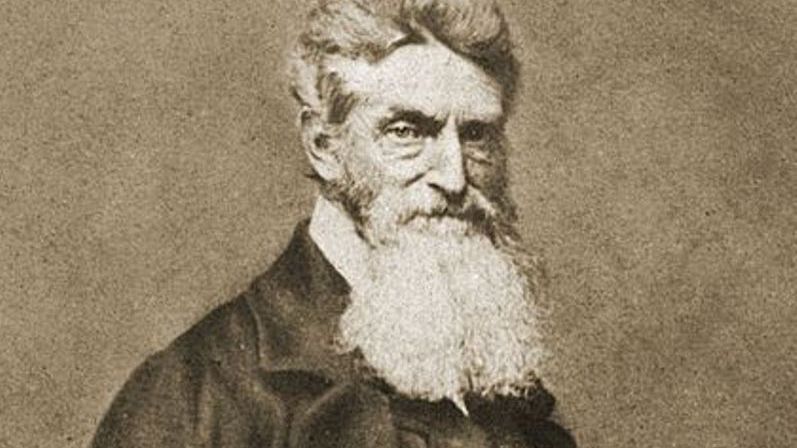About Publications Library Archives
heritagepost.org

Preserving Revolutionary & Civil War History

Preserving Revolutionary & Civil War History

John Brown was the son of a wandering New Englander. Brown spent much of his youth in Ohio, where he was taught in local schools to resent compulsory education and by his parents to revere the Bible and hate slavery. As a boy he herded cattle for Gen. William Hull’s army during the war of 1812; later he served as foreman of his family’s tannery. In 1820 he married Dianthe Lusk, who bore him 7 children; 5 years later they moved to Pennsylvania to operate a tannery of their own. Within a year after Dianthe’s death in 1831, Brown wed 16-year-old Mary Anne Day, by whom he fathered 13 more children.
During the next 24 years Brown built and sold several tanneries, speculated in land sales, raised sheep, and established a brokerage for wool growers. Every venture failed, for he was too much a visionary, not enough a businessman. As his financial burdens multiplied, his thinking became increasingly metaphysical and he began to brood over the plight of the weak and oppressed. He frequently sought the company of blacks, for 2 years living in a freedmen’s community in North Elba, N.Y. In time he became a militant abolitionist, a “conductor” on the Underground Railroad, and the organizer of a self-protection league for free blacks and fugitive slaves.
By the time he was 50, Brown was entranced by visions of slave uprisings, during which racists paid horribly for their sins, and he came to regard himself as commissioned by God to make that vision a reality. In Aug. 1855 he followed 5 of his sons to Kansas to help make the state a haven for anti-slavery settlers. The following year, his hostility toward slave-staters exploded after they burned and pillaged the free-state community of Lawrence. Having organized a militia unit within his Osawatomie River colony, Brown led it on a mission of revenge. On the evening of 23 May 1856, he and 6 followers, including 4 of his sons, visited the homes of pro-slavery men along Pottawatomie Creek, dragged their unarmed inhabitants into the night, and hacked them to death with long-edged swords. At once, “Old Brown of Osawatomie” became a feared and hated target of slave-staters.
In autumn 1856, temporarily defeated but still committed to his vision of a slave insurrection, Brown returned to Ohio. There and during 2 subsequent trips to Kansas, he developed a grandiose plan to free slaves throughout the South. Provided with moral and financial support from prominent New England abolitionists, Brown began by raiding plantations in Missouri but accomplished little. In the summer of 1859 he transferred his operations to western Virginia, collected an army of 21 men, including 5 blacks, and on the night of October 16th raided the government armory and arsenal at Harpers Ferry From there he planned to arm the thousands of chattels who, learning of his crusade, would flock to his side. Instead, numerous bands of militia and a company of U.S. Marines under Bvt. Col. Robert E. Lee hastened to the river village, where they trapped the raiders inside the fire-engine house and on the 18th stormed the building. The fighting ended with 10 of Brown’s people killed and 7 captured, Brown among them.
After a sensational trial, he was found guilty of treason against Virginia and was hanged at Charlestown, amid much fanfare, Dec. 2, 1859. The stately, fearless, unrepentant manner in which he comported himself in court and on the gallows made him a martyr in parts of the North.